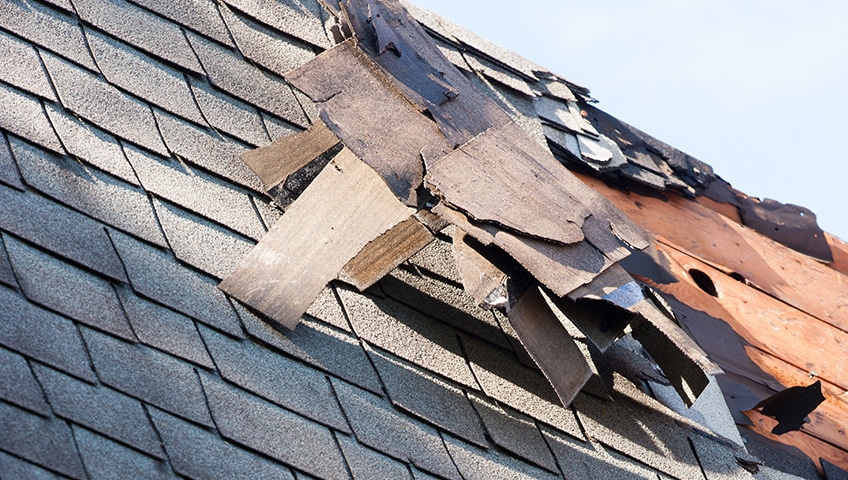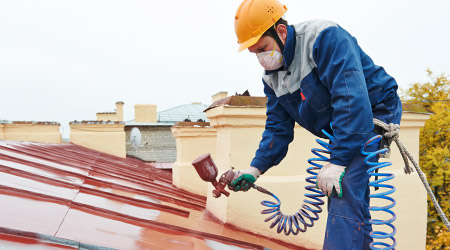A Guide on How to Protect Your Roof from Storms
A well-maintained roof is a crucial line of defense against the elements, especially during storms. Storms, whether they be hurricanes, thunderstorms, or heavy rain, can wreak havoc on roofs, leading to costly repairs or even replacement. To safeguard your home and belongings, it’s essential to take proactive measures to protect your roof from storm damage. Here’s a comprehensive guide on how to do just that, just continue reading!
How to Protect Your Roof from Storms

Your roof is your home’s first line of defense against the fury of storms. This comprehensive guide provides essential steps to fortify your roof and protect your investment. From regular inspections to advanced reinforcements, these strategies ensure your roof stands strong in the face of nature’s toughest challenges. Don’t wait for the next storm to strike; take action now and safeguard your home with these expert-approved techniques.
Regular Inspections and Maintenance
Regular inspections are the cornerstone of a storm-resistant roof. At least twice a year, and especially before storm seasons, conduct a thorough examination of your roof. Look for loose, damaged, or missing shingles, signs of water damage, and any areas that may need resealing.
Secure Loose Objects
Before a storm hits, secure any loose objects around your property that could become projectiles in high winds. This includes patio furniture, gardening tools, and even tree branches. These items can cause severe damage not only to your roof but also to other parts of your home.
Trim Overhanging Trees

Overhanging branches can scrape against your roof during a storm, causing damage to shingles and even puncturing the roof’s surface. Regularly trim branches that hang too close to your home to prevent this from happening.
Reinforce Vulnerable Areas
Pay special attention to areas of your roof that are more vulnerable to storm damage, such as the edges and corners. Reinforce these areas by installing extra layers of shingles or using specialized roofing materials designed for high-wind areas.
Install Impact-Resistant Shingles
Consider using impact-resistant shingles, especially if you live in an area prone to hail or heavy winds. These shingles are designed to withstand the impact of debris and can significantly reduce the risk of damage during a storm.
Seal Roof Penetrations
Roof penetrations like vents, chimneys, and skylights are potential weak points during a storm. Make sure they are properly sealed to prevent water infiltration. Use high-quality sealant or flashing to reinforce these areas.
Ensure Proper Attic Ventilation
A well-ventilated attic helps regulate temperature and moisture levels, which can prevent damage to your roof over time. It also reduces the risk of ice dams forming in colder climates, which can lead to water leaks.
Install a Soffit and Fascia System
Soffits and fascias are the parts of the roof that protect the edges and underbelly. A properly installed and maintained soffit and fascia system can prevent water from seeping into your home and protect your roof from storms and against wind damage.
Upgrade to Impact-Resistant Windows
While not directly related to the roof, upgrading to impact-resistant windows can provide an extra layer of protection against storm damage. Flying debris can break windows, leading to further structural damage.
Have a Professional Inspection

In addition to your regular inspections, it’s a good idea to have a professional roofing contractor assess your roof periodically. They have the expertise to identify potential issues that might not be immediately obvious.
Install Reinforced Roof Decking
Consider using reinforced roof decking materials like plywood or OSB (oriented strand board) with high wind resistance ratings. These materials provide extra structural support, especially in areas prone to severe storms.
Invest in a Quality Gutter System
Well-maintained gutters and downspouts are crucial for directing water away from your roof and foundation. Ensure they are clear of debris and properly secured. Consider installing gutter guards to prevent clogs.
Apply a Weatherproof Coating
Applying a weather-resistant coating to your roof can provide an extra layer of protection against moisture and UV rays. Consult with a roofing professional to determine the most suitable coating for your specific roof type.
Install Hurricane Clips or Straps
In regions susceptible to hurricanes and strong winds, consider installing hurricane clips or straps. These metal connectors help anchor the roof to the walls of your home, providing additional reinforcement during severe storms.
Monitor Weather Forecasts
Stay informed about impending storms through reliable weather sources. Being aware of approaching severe weather allows you to take precautionary measures, such as securing loose items or even temporarily covering vulnerable areas of your roof.
Have Emergency Repairs Kits Ready
Keep a kit with basic roofing supplies handy. This kit should include extra shingles, roofing nails, sealant, and a tarp. In the event of minor storm damage, having these materials readily available can help you make immediate repairs.
Consider a Roof Over

A roof over, also known as a secondary water barrier, is an additional layer of protection installed over your existing roof. This can be particularly beneficial in areas prone to heavy rains and wind-driven rain.
Insulate Your Attic Properly
Proper insulation not only helps regulate temperature but also prevents ice dams from forming in colder climates. Ice dams can lead to water infiltration, which can cause significant damage to your roof and home.
Monitor for Signs of Water Damage
After a storm, inspect your attic and ceilings for any signs of water damage. Addressing leaks promptly can prevent further structural issues and mold growth.
Consider Reinforced Glass Skylights
If you have skylights, consider upgrading to reinforced glass versions designed to withstand hail and other impacts. This can help prevent damage and leaks during severe weather events.
Wrapping It Up

Protecting your roof from storms is an essential aspect of home maintenance. By following these steps on how to protect your roof and staying vigilant, you can significantly reduce the risk of storm-related damage. Remember, prevention is key, and investing time and resources now can save you from costly repairs down the line.
If you would like to have a free roof inspection and gain proper insight on how to maintain your roof better, contact us now at Stradling Roofing!
